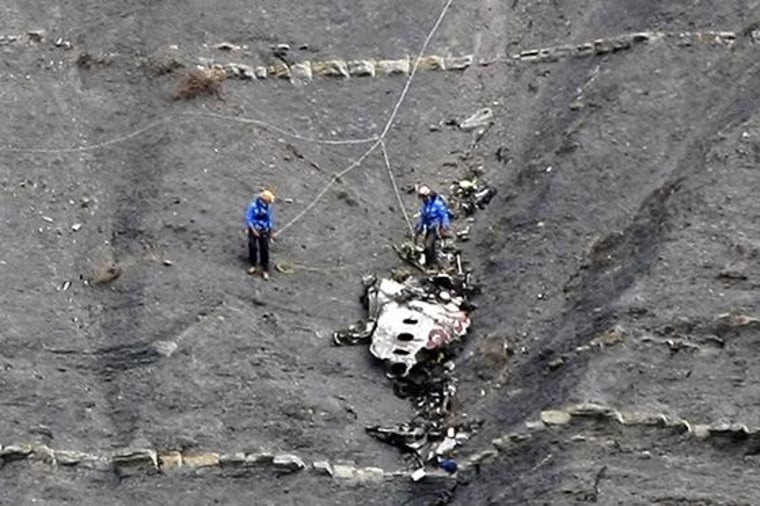Commercial aviation had its safest year on record in 2015, but intentional acts killed more fliers than accidents for the second year running, according to a new report.
Overall, air transport operations resulted in a global fatal accident rate of just 1 in 5 million flights last year, the lowest figure on record. The revenue passenger fatality rate was approximately one per 40 million, four times better than the previous year, according to statistics compiled by Flight Global, an aviation news and industry data company.
There were only eight accidental airline crashes last year accounting for 161 passenger and crew deaths — the fewest crashes and deaths since at least 1946, reflecting continued improvement in safety technology and aircraft design, Flight Global reported in its annual Airline Safety & Losses review.
That tally was far outpaced by the 374 killed when a Germanwings airliner was deliberately flown into a mountainside in the French Alps last March, and the 224 who died when a Russian airliner packed with tourists exploded over Egypt in October.
In 2014, the toll from a Malaysia Airlines plane that disappeared and another that was shot down over Ukraine was 537 deaths compared to 436 accident deaths that year.
Architect of Extra Fee Strategy Out as CEO of Spirit Airlines
Those tallies are for all types of airline flights, including cargo, positioning, training, and maintenance flights. There were just 98 paying passengers killed last year. It's a vast improvement from the 790 passengers killed in 2007, and the annual average of 1,289 passengers killed in accidental crashes in the 1970s.
"In recent years, airline safety has improved very considerably to the point where, typically, there are now very few fatal accidents and fatalities in a year," said Paul Hayes, Flightglobal's director of air safety and insurance. "However, flight security remains a concern."
Although some years are better than others, the fatal accident rate has been improving for many years. The global fatal accident rate for all types of airline operations in 2015 was one per 5 million flights, the best year ever. The previous best year was 2014, with a fatal accident rate of 1 per 2.5 million flights. Airline operations are now about four or five times safer than they were 20 years ago.
Video: Deadly Air Ambulance Crashes Raise Industry Safety Concerns
A big reason for the improving record is better engineering: Today's airliners and aircraft engines are far safer than earlier generations of planes. They are more highly automated, which has reduced many common pilot errors. They have better satellite-based navigation systems. They are made of stronger, lighter weight, less corrosive materials. And they're equipped with safety systems introduced in recent decades, and repeatedly improved over time, that have nearly eliminated mid-air collisions between airliners and what the industry calls "controlled flight into terrain" — pilots who lose situational awareness and fly their planes into a mountainside or into the ground.
The aircraft improvements are due primarily to lessons learned from crash investigations that are taken into account when new planes are designed, said John Goglia, a former National Transportation Safety Board member. As older planes are replaced with newer planes, aviation becomes safer, he said.
"We're now up to about the 7th generation of jet airplanes," he said. "We know the first generation — DC-8s, 707s — had a higher accident rate than the second or the third or the fourth generations, and it just moves on up."
